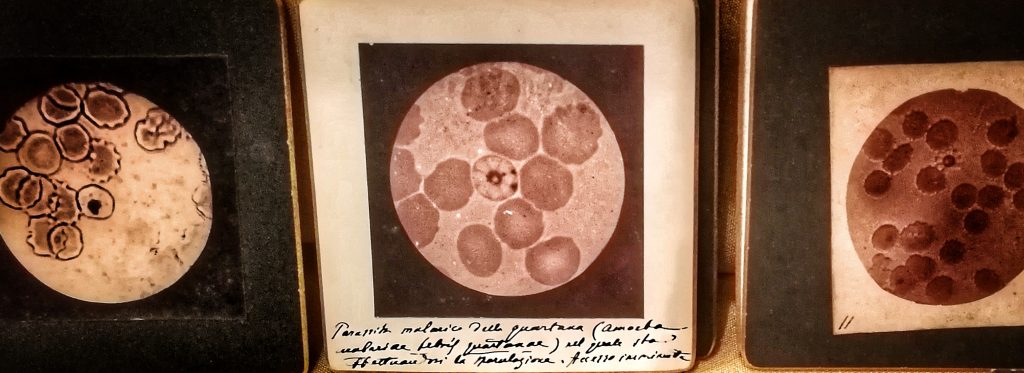The Golgi Room
The room is dedicated to Camillo Golgi (1843-1926), winner of the Nobel prize for Medicine in 1906: the doctor and professor had developed a histological method, known as Golgi’s Method, “black reaction” or silver-chromate reaction, which was key to the founding of modern neurosciences.
Golgi’s studies on Malaria proved the constant of morphological modifications between fever attacks (Golgi’s Cycle) and that the fever onset is produced in all of the illness forms by the reproduction of the Plasmodium, the parasite which causes the affliction (Golgi’s Law).
The scientist also identified one of the fundamental components of the cell: the internal reticular apparatus, better known as Golgi Apparatus (or Golgi Body).
On display in the Museum are several microscopic preparations, original manuscripts, drawings, instruments and the Nobel Prize Certificate – which he won ex aequo with his rival, Spanish scientist Ramón y Cayal (1852-1934).

Golgi’s malaria microscope slides
The Golgi room also houses memories of other scientists who trained and taught at the University of Pavia:
- Paolo Mantegazza (1831-1910), founder of the experimental pathology laboratory;
- Eusebio Oehl (1827-1903), who developed histology in Pavia and counts as his pupils the likes of Golgi and Bizzozero;
- Giacomo Sangalli (1821-1897), who taught pathological anatomy;
- Carlo Forlanini (1847-1918), who, after dedicating his entire life to the care of pulmonary diseases and in particular tuberculosis, developed a treatment for TBC based on compression and immobilization of the lung through artificial pneumothorax;
- Giulio Bizzozero (1846-1901), who taught Golgi;
- Adelchi Negri (1876-1912), a brilliant yet luckless pupil of Golgi who redacted several important studies on Rabies;
- Edoardo Porro (1842-1902), the first to correctly pinpoint the cause of death for pregnant women who underwent Cæsarean operation (infection of the severed organs) and to develop a technique to improve on the surgery by excising the uterus, ovaries and oviducts – saving countless women in his time.
